Unlocking Efficiency: Nasdaq’s SEC-Approved AI-Driven Trade Order Type Reshapes Markets
Imagine navigating the intricate currents of financial markets, where split-second decisions can profoundly impact your trading outcomes. For years, traders have relied on automated systems to help manage their positions, but the speed and complexity of modern markets demand increasingly sophisticated tools. The evolution of trading technology is a constant race to improve execution quality, minimize costs, and maximize the probability of a favorable trade outcome.
We’re now witnessing a pivotal moment in this evolution. Recently, Nasdaq received landmark approval from the U.S. Securities and Exchange Commission (SEC) for something truly groundbreaking: the very first exchange-based AI-driven order type. This innovation, known as the Dynamic Midpoint Extended Life Order (Dynamic M-ELO), is poised to fundamentally change how certain types of orders are executed on the exchange, promising enhanced efficiency and potentially better results for traders like you. Understanding this development requires delving into the intersection of cutting-edge artificial intelligence and the foundational mechanics of trading.
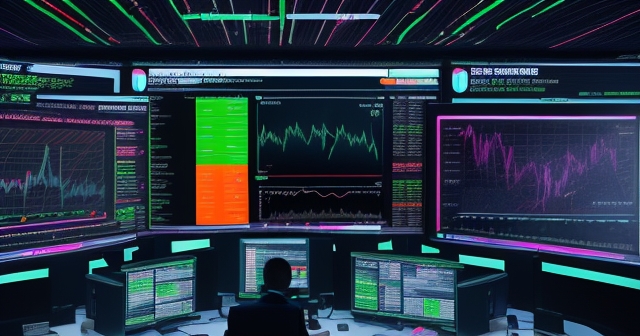
The Regulatory Cornerstone: SEC’s Green Light for AI
Regulatory bodies play a crucial role in ensuring the fairness, stability, and integrity of financial markets. The SEC, in particular, is tasked with overseeing exchanges, brokerage firms, and the novel technologies introduced within these critical structures. Their approval process for new trading mechanisms, especially those incorporating complex computational methods like artificial intelligence, is intentionally rigorous. It’s designed to assess potential risks, ensure compliance with existing regulations like Reg NMS (Regulation National Market System), and verify that the technology contributes positively to the market ecosystem without creating unfair advantages or introducing new vulnerabilities.
On a specific date that marks a significant entry point for AI into core exchange operations, September 8, 2023, the SEC granted its approval for Nasdaq’s proposal. This decision to greenlight the Dynamic M-ELO was more than just an administrative stamp; it was a formal acknowledgment from the primary U.S. securities regulator of the potential for advanced artificial intelligence to enhance core market functions while seemingly meeting necessary regulatory standards for fairness, access, and stability. For the financial industry, this signifies a major step in legitimizing the application of AI directly within the operational heart of a major stock exchange.
The process leading to such approval typically involves detailed filings by the exchange outlining the technology, its proposed operation, potential impacts, and how it aligns with existing market rules. These filings are often subject to public comment periods, allowing market participants, academics, and the public to voice concerns or offer insights. The SEC staff then undertakes a thorough review, which for an AI-driven system would likely involve deep dives into the algorithms, training methodologies, back-testing results, and potential edge cases. This rigorous scrutiny underscores the significance of the Dynamic M-ELO’s approval – it suggests Nasdaq effectively demonstrated the system’s potential benefits while mitigating regulatory concerns regarding its complexity and potential impact on market behavior.
Introducing Dynamic M-ELO: More Than Just an Order Type
To grasp the innovative nature of the Dynamic M-ELO, let’s first place it in the context of existing trading tools. If you’ve traded stocks, you’re likely familiar with basic order types such as market orders (execute immediately at the best available price) and limit orders (execute at a specified price or better). These are fundamental instructions you give your broker and the exchange about how you want your trade to be handled.
The Dynamic M-ELO operates in a more sophisticated space, building upon a predecessor known simply as the M-ELO (Midpoint Extended Life Order). A traditional M-ELO is designed to execute at the midpoint price between the National Best Bid and Offer (NBBO). This midpoint execution is often sought by traders, particularly institutional ones, who are trading in size and prioritize minimizing market impact. Executing at the midpoint, rather than taking the bid or hitting the offer, can reduce the transaction cost spread and is less likely to “walk the book” or move the market price significantly against the trader.
The “Extended Life” component of the traditional M-ELO means these orders are designed to persist in the order book for a longer period than typical limit orders, increasing their chances of being filled over time without needing constant re-submission. This persistence helps patient traders achieve midpoint fills.
Now, here’s where the “Dynamic” in Dynamic M-ELO introduces the revolutionary element. Instead of relying on a static, pre-set lifespan or timeout for the order, this new type incorporates real-time artificial intelligence. This AI component does not just follow a pre-programmed script; it actively analyzes live market conditions and *dynamically* adjusts the order’s internal parameters, specifically its effective holding period and how it interacts with the order book, based on its learned understanding of optimal execution strategy in the current environment. Think of it as turning a simple timer into an intelligent assistant constantly observing the market clock and deciding the best moment to be patient or to step away.
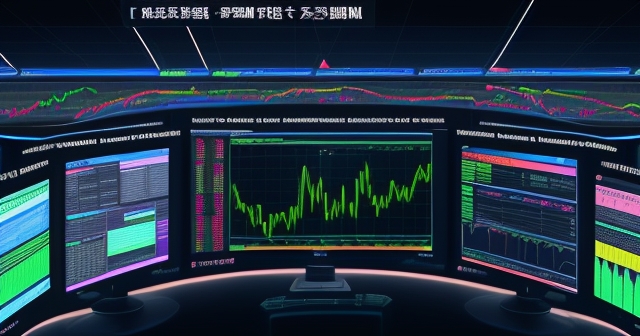
The Heart of the System: Real-time Reinforcement Learning AI
The engine powering the Dynamic M-ELO is a sophisticated application of artificial intelligence, specifically employing techniques drawn from reinforcement learning. If you’re familiar with broader AI concepts, you might first think of systems trained on vast datasets to recognize patterns in images or text (like supervised learning). Reinforcement learning takes a different approach: it involves an ‘agent’ learning to make sequential decisions by interacting with an environment and receiving feedback in the form of rewards or penalties. This learning process is akin to teaching a robot to walk – it tries a movement, falls over (penalty), learns not to do that, tries another movement, stays upright for a second (small reward), and through repeated trials, learns a policy (a strategy) for walking effectively.
In the context of the Dynamic M-ELO, the ‘agent’ is the AI algorithm managing your order on the exchange. The ‘environment’ is the live, constantly changing market with its flux of prices, volumes, and the structure of the order book for the specific security being traded. The ‘actions’ the AI agent can take might be conceptual – like deciding whether to keep the order active in the face of volatility, deciding when it’s most opportune to remain passive at the midpoint, or implicitly deciding when conditions suggest the order is unlikely to fill favorably and should perhaps ‘step back’ or wait. The ‘feedback’ the AI receives is crucial: it gets ‘rewards’ for successful order fills, particularly those achieved close to the ideal midpoint, and it might receive ‘penalties’ when a fill is followed by an immediate adverse price movement (a mark-out) or when the order remains unfilled for a long period in conditions where it statistically should have filled.
This use of reinforcement learning is particularly well-suited for dynamic environments like financial markets where decisions are sequential, and the consequence of one action affects future possibilities. Unlike supervised learning which needs labeled examples of ‘correct’ actions, reinforcement learning learns by trying and optimizing a long-term reward signal. This allows the AI controlling the Dynamic M-ELO to develop a nuanced ‘policy’ for managing the order’s interaction with the market, constantly learning and adapting based on the stream of live market data. This real-time adaptation is key; the AI isn’t working off outdated patterns but is attempting to optimize its behavior based on the immediate reality of the trading environment.
Understanding the complexity here is key for traders aiming for a university-level grasp of these tools. The AI isn’t simply executing a few `if-then` rules; it’s operating based on a complex model developed through potentially millions of simulated or observed interactions, where it learned the statistical relationships between market conditions (its ‘state’) and the effectiveness of different order management ‘actions’ in achieving the desired outcome (high fill probability at midpoint, low mark-out). This learned ‘policy’ guides its dynamic adjustments.
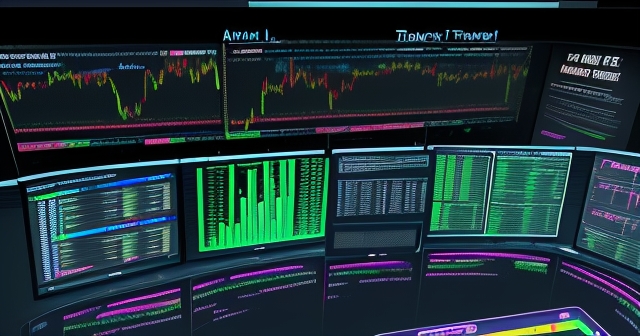
Deconstructing the AI’s Process: Data and Decisions
So, how does this sophisticated AI agent actually make its decisions in the heat of trading? The practical implementation relies on feeding the reinforcement learning model with a rich stream of relevant, real-time market data. The core data point provided is that the AI analyzes over 140 data points from the market environment every 30 seconds. This level of detail and frequency is crucial for enabling truly dynamic responsiveness to the fast-paced nature of electronic markets.
Think about the sheer volume and variety of information potentially included in those 140+ data points. It goes far beyond just the current best bid and offer. It likely includes:
- Order Book Depth: Information about the volume of buy and sell orders waiting at different price levels away from the best bid/offer. This indicates immediate supply and demand pressure.
- Recent Trading Volume and Velocity: How much trading is happening right now, and how quickly? High volume might indicate strong interest or potential for quick fills, while low volume might suggest patience is required.
- Price Volatility: How much are prices fluctuating? High volatility might signal riskier execution windows, while low volatility might present calmer opportunities.
- Time Elapsed: How long has the Dynamic M-ELO order already been sitting in the book? The AI might have learned that patience is valuable up to a certain point, but beyond that, the probability of a good fill diminishes.
- Market Microstructure Signals: More complex data points derived from the sequence and timing of trades and quotes, which can provide subtle clues about the intentions of other market participants.
- Spread Width: The difference between the best bid and best offer. A wider spread might affect the calculation of the midpoint and the attractiveness of executing there.

By processing this wealth of information near-real-time – every 30 seconds – the AI gains a nuanced understanding of the current market microstructure surrounding your specific order and the security you are trading. Based on its learned reinforcement learning policy, the AI then uses this ‘state’ information (the 140+ data points) to make implicit ‘decisions’ about how to manage the order. These decisions aren’t necessarily about changing the limit price (as M-ELO targets the midpoint), but rather about the order’s ‘behavior’ or ‘patience’. Should it remain actively displayed? Should it pull back momentarily if conditions look unfavorable for a good fill or if volatility spikes? Should it adjust its internal parameters related to its target holding time based on current liquidity?
The 30-second analysis cycle enables the AI to be responsive to rapidly changing conditions, a significant advantage over static order types or even simpler algorithmic approaches that might rely on less frequent updates or fewer data points. This continuous feedback loop of observing the market state and making learned adjustments is the core of the Dynamic M-ELO’s intelligent operation.
Quantifying the Advantage: The Promise of Improved Performance
Theory and technology are fascinating, but ultimately, traders care about results. Nasdaq’s internal research and testing of the Dynamic M-ELO yielded some compelling performance metrics that highlight the potential tangible benefits of this AI approach compared to its non-AI predecessor. These statistics provide concrete evidence supporting the value proposition of integrating artificial intelligence into trade execution.
Perhaps the most significant figure reported is a 20.3% increase in fill rates. For you, the trader using a Dynamic M-ELO, this means that when you place such an order, statistically, it has a substantially higher probability of actually being executed compared to a similar order using the older, static M-ELO logic under comparable market conditions. A higher fill rate is critical because an unfilled order, no matter how well-priced, doesn’t contribute to your trading strategy’s outcome. It represents a missed opportunity. A 20.3% improvement suggests a significant boost in the order type’s effectiveness at finding suitable counterparties and achieving execution.
Equally important, particularly for strategies focused on minimizing transaction costs and market impact, is the reported 11.4% reduction in mark-outs. A mark-out occurs when the market price moves adversely against your filled order shortly after execution. For example, if your buy order is filled at $50.00, and the price immediately drops to $49.95, you’ve experienced a $0.05 mark-out per share. Mark-outs are a form of implicit trading cost; they erode profitability. Reducing mark-outs suggests the AI is becoming more adept at timing the execution of orders at moments that minimize negative market impact and improve the quality of the execution price over the very short term. The AI, through its reinforcement learning, appears to have learned how to avoid those moments just before the price is about to move adversely, leading to better execution quality.
These two metrics, taken together, paint a picture of a more effective and less costly trade execution tool. A higher fill rate means your desired trades are more likely to occur, improving the chances of implementing your strategy fully. A lower mark-out rate means the executions you *do* get are likely to be of higher quality, reducing slippage and preserving profitability. For sophisticated traders and institutional firms routing large orders, even small percentage improvements in execution quality translated across millions or billions of dollars in volume can result in substantial cost savings and performance enhancements.
| Performance Metric | Dynamic M-ELO | Traditional M-ELO |
|---|---|---|
| Fill Rate Increase | 20.3% | N/A |
| Mark-Out Reduction | 11.4% | N/A |
| Overall Trade Efficiency | Higher | Lower |
Beyond the Numbers: Practical Benefits for Traders
While the raw percentages like improved fill rates and reduced mark-outs are powerful indicators of the Dynamic M-ELO’s technical prowess, let’s think about what these improvements mean for you in your day-to-day trading activities. The primary goals behind developing this AI-driven order type are centered around delivering concrete, practical benefits to market participants who choose to utilize it. It’s about translating technological sophistication into tangible advantages.
One key benefit, stemming directly from the improved performance metrics, is the promise of genuinely improved trading outcomes. By dynamically adjusting to real-time market conditions, the AI controlling your order aims to execute it more successfully (higher fill rate) and at a better effective price point (lower mark-outs). This directly contributes positively to the profitability and overall performance of strategies that rely on midpoint execution or need to minimize market impact, such as many quantitative or institutional trading strategies.
Furthermore, the system is designed to increase overall trading efficiency. For the sophisticated trading desks or individuals using such advanced order types, an AI that intelligently manages the complexities of order placement, timing, and persistence reduces the need for constant manual monitoring and adjustments. It automates complex decision-making processes based on a deep, learned understanding of market microstructure dynamics, potentially speeding up the overall order matching process where appropriate and freeing up human traders to focus on higher-level strategic decisions or managing a broader portfolio.
The focus on minimizing market impact is particularly valuable. When placing large orders, attempting to execute too aggressively can move the market price against you, increasing costs. Order types designed for midpoint execution and minimal footprint, like the M-ELO family, are crucial here. The AI enhancement in the Dynamic M-ELO aims to achieve this minimal impact even more effectively by intelligently navigating volatile periods and seeking out optimal moments for passive execution, like a seasoned angler waiting patiently for the perfect moment to cast their line based on subtle cues in the water.
For you, this means potentially achieving your desired midpoint executions more reliably, with less adverse price movement impacting your position immediately after the trade. This contributes to lower implicit trading costs and a better overall average execution price across your trades, providing a strategic edge in competitive markets.
Navigating the Regulatory Landscape: Why This Approval Matters
Gaining SEC approval for a novel AI-driven order type like the Dynamic M-ELO is a landmark event, not just for Nasdaq but for the entire financial technology landscape. The journey through the regulatory process is often lengthy, complex, and requires extensive disclosure and justification. It demands demonstrating not only the technical viability and potential benefits of the system but also its compliance with existing market rules, its contribution to overall market integrity, and its ability to operate fairly and reliably under various market conditions.
Integrating artificial intelligence into core trading infrastructure presents unique and significant challenges for regulators like the SEC. Traditional trading systems, while complex, often operate based on deterministic rules or well-understood algorithms. AI systems, particularly those employing machine learning and reinforcement learning, can be less transparent in their internal decision-making processes. Concerns that regulators must address might include:
- Explainability: Can the exchange explain *why* the AI algorithm took a specific action or made a particular decision? This is challenging with ‘black box’ AI models.
- Predictability and Stability: Will the AI behave as expected during periods of extreme market volatility or stress? Could its actions, or the collective actions of multiple AI systems, inadvertently contribute to market instability?
- Fair Access and Fairness: Does the AI order type provide fair and non-discriminatory access and execution opportunities for all market participants? Does it potentially create unfair advantages for users or the exchange?
- System Resilience: Is the AI system robust and secure against errors, manipulation, or cyber threats?
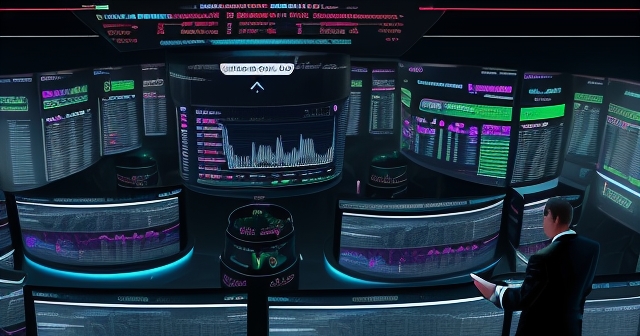
Nasdaq would have had to meticulously address each of these points in their filing and discussions with the SEC, providing robust data, simulations, and analysis to build confidence in the system’s design, training process, and operational safeguards. The SEC’s approval signifies that they were satisfied with Nasdaq’s submission and concluded that the Dynamic M-ELO could be introduced into the market in a manner consistent with the regulatory mandate to protect investors and maintain fair and orderly markets.
This approval sets a crucial precedent. It demonstrates that regulatory bodies are willing to embrace advanced AI within core trading operations, provided the technology is thoroughly vetted, understood, and deemed compliant with regulatory principles. This opens the door for further innovation in AI-powered trading tools across exchanges and other market participants, signaling a potential acceleration in the adoption of intelligent automation within regulated capital markets.
AI in Context: Comparing Dynamic M-ELO to Traditional Order Types
To truly appreciate the innovation behind the Dynamic M-ELO, it helps to understand where it fits within the broader universe of trading order types available to you on an exchange like Nasdaq. Most traders begin their journey learning about fundamental order types, and even experienced traders rely on a suite of basic and advanced options to execute their strategies. Comparing Dynamic M-ELO highlights its unique capabilities.
Consider the most common types:
- Market Order: Execute immediately at the best available price. Priority is speed over price. It’s simple but can result in unfavorable fills in fast-moving markets, especially for larger orders (potential for significant market impact).
- Limit Order: Execute only at a specified price or better. Priority is price control over speed. A buy limit order sits below the market, a sell limit order above. It might not get filled if the market doesn’t reach your price.
- Stop Order: Becomes a market or limit order once a trigger price is reached. Used for risk management or initiating trades based on price breakouts.

Many exchanges also offer various complex order types designed for specific strategies or execution goals, such as iceberg orders (showing only a small portion of a large order), pegging orders (following the bid/ask or midpoint), and different time-in-force conditions (e.g., Fill or Kill, Immediate or Cancel). The traditional M-ELO fits into this category of more specialized orders, designed for midpoint execution with an extended lifespan.
The Dynamic M-ELO takes the core concept of the M-ELO – aiming for a midpoint fill over time – and adds an unprecedented layer of intelligence and adaptability. Unlike a static limit order that simply waits at a price, or even a traditional M-ELO with a fixed lifespan, the Dynamic M-ELO uses its AI to constantly re-evaluate the probability of a successful, low-impact fill based on its learned model and the real-time flood of market data. It’s not just passively waiting; it’s intelligently managing its presence and behavior in the order book.
This means the AI might decide, implicitly, that given the current volatility or liquidity conditions, it’s prudent to be less aggressive or patient, extending the *effective* waiting period. Conversely, in different conditions, it might determine that a fill is highly probable and favorable, maintaining a more active presence. This dynamic adjustment is something static order types simply cannot replicate. They operate based on fixed parameters you set; the Dynamic M-ELO operates based on an evolving understanding of the market state as interpreted by its AI, striving to optimize for the target outcome (midpoint fill, low mark-out) in a way that is beyond hard-coded rules.
This makes the Dynamic M-ELO particularly appealing to sophisticated traders, quantitative funds, and institutional investors who manage complex strategies where subtle improvements in execution quality across many trades can significantly impact overall portfolio performance. It represents a tool designed for precision and optimized execution in the high-speed, complex environment of modern stock trading.
Broader Market Implications: Reshaping the Trading Ecosystem
The introduction and regulatory acceptance of the Dynamic M-ELO on Nasdaq isn’t just a technical upgrade for a single exchange; it carries significant implications for the broader market structure, the competitive dynamics among exchanges, and the ongoing integration of technology into finance. This development is a clear indicator of where the industry is heading.
As noted by industry analysts, innovations like this could become key differentiators for exchanges in the increasingly competitive landscape of capital markets. Exchanges compete fiercely for order flow – the volume of buy and sell orders routed through their systems. Traders and brokerage firms often route orders to exchanges that offer the best execution quality, the deepest liquidity, or the most sophisticated tools. If Nasdaq can demonstrate that the Dynamic M-ELO consistently delivers better fill rates and fewer mark-outs compared to executing similar strategies elsewhere, it provides a compelling reason for market participants to choose Nasdaq.
Indeed, analysts like Owen Lau, a Managing Director at Oppenheimer & Co. covering exchanges and financial technology, commented on this potential competitive advantage. Mr. Lau suggested that offering superior execution quality through advanced tools like this AI-driven order type could potentially help Nasdaq capture market share from competing exchanges. This highlights how technology, specifically advanced AI in this case, is becoming a strategic weapon in the battle for order flow and market dominance.
Furthermore, this successful SEC approval and implementation serve as a powerful signal to the rest of the financial industry globally. It validates the application of sophisticated artificial intelligence not just in back-office functions or analytics, but in the core mechanics of trade execution itself. This will likely spur further innovation and investment in AI-powered trading technologies across other exchanges, large brokerage firms, quantitative trading desks, and hedge funds. We can expect to see more proposals for AI-enhanced order types, smart routing systems powered by AI, and AI integrated into matching engines and market surveillance systems.
The Dynamic M-ELO is a tangible example of how AI is moving from the realm of theoretical research and back-testing into deployed, regulated market infrastructure. It underscores the growing trend of AI adoption across various facets of the financial industry, aiming to enhance efficiency, reduce costs, manage risk, and improve decision-making in ever more complex environments.
The Road Ahead: Future of AI in Capital Markets
The launch and regulatory acceptance of the Dynamic M-ELO feel like just the beginning of a new chapter for AI in capital markets. As we look ahead, we can anticipate the role of artificial intelligence becoming even more integrated, sophisticated, and pervasive within the trading ecosystem and the broader financial industry. The success of this first AI-driven order type on a major exchange like Nasdaq could accelerate this trend significantly.
This approval could pave the way for other exchanges to develop and propose their own AI-enhanced order types, potentially specialized for different asset classes (like options or futures) or designed to optimize for different trading objectives beyond midpoint execution. Imagine AI order types specifically engineered for high-volume strategies needing minimal impact, or those designed to maximize liquidity capture, or even orders that dynamically adjust their limit price based on predicted short-term volatility.
Beyond direct trade execution, AI is already being applied in numerous other areas within finance, and its role is set to grow. This includes predictive analytics for market movements and volatility forecasting, optimizing portfolio allocation and rebalancing, enhancing risk management models, detecting fraudulent activity and market manipulation, and improving cybersecurity for trading platforms and financial networks. You might see AI-powered assistants offering real-time insights into market conditions relevant to your specific positions or even helping to construct and refine complex algorithmic trading strategies based on your stated objectives and risk tolerance.
However, the expansion of AI in finance isn’t without its ongoing challenges and considerations. Work will be required to ensure these systems are robust and reliable, especially during unforeseen ‘black swan’ events. The issue of explainability – understanding *why* an AI made a specific trade or decision – remains a significant hurdle for both regulatory oversight and risk management. Ensuring fairness and preventing bias in algorithms is crucial. Regulatory frameworks will also need to continue evolving proactively to keep pace with technological advancements while safeguarding market integrity, promoting fair competition, and protecting investor confidence in an increasingly automated and intelligent market environment.
Despite these challenges, the trajectory is clear. Artificial intelligence is set to play an ever-larger role in shaping the future of capital markets. The foundation laid by the Dynamic M-ELO’s approval is a critical step in building that future, demonstrating the potential for AI to enhance the efficiency and performance of the very core of our trading systems.
Conclusion: A Step Towards Smarter Trading
In summary, the SEC’s approval of Nasdaq’s Dynamic M-ELO represents a truly significant milestone in the integration of advanced artificial intelligence into the core mechanics of financial markets. By leveraging real-time reinforcement learning to dynamically manage trade orders based on a constant stream of over 140 data points analyzed every 30 seconds, Nasdaq is offering a sophisticated tool designed to improve execution quality for traders.
The demonstrated performance metrics from Nasdaq’s testing – a 20.3% increase in fill rates and an 11.4% reduction in mark-outs – provide compelling evidence of the tangible benefits this AI-driven order type can potentially deliver. These improvements translate directly into potentially better trading outcomes for market participants who utilize the Dynamic M-ELO, by increasing the likelihood of desired executions and reducing associated implicit costs.
This pioneering move is more than just a technical upgrade; it’s a clear indicator of how AI is set to reshape the future of stock trading and potentially competitive dynamics among exchanges, as suggested by analysts observing the market. For you, the trader interested in understanding the cutting edge of trading technology, it signifies the increasing availability of intelligent tools designed to help navigate market complexities more effectively and efficiently.
As AI continues its rapid advancement, we can confidently expect to see even more sophisticated applications emerge within capital markets, from enhanced order types to intelligent analytics and risk systems. The Dynamic M-ELO is a powerful and regulated step on this exciting path towards smarter, more efficient, and potentially more profitable trading for all participants in the global financial system.
receives approval for aibased trade ordersFAQ
Q:What is the Dynamic M-ELO?
A:The Dynamic M-ELO is Nasdaq’s first AI-driven order type designed to enhance trading efficiency by dynamically adjusting order parameters based on real-time market conditions.
Q:How does the Dynamic M-ELO improve fill rates?
A:By utilizing reinforcement learning and analyzing over 140 data points every 30 seconds, the Dynamic M-ELO increases the likelihood of order execution by adapting to current market conditions.
Q:What impact does the SEC approval have on AI in trading?
A:The SEC’s approval signifies a regulatory acceptance of AI technology in trading, paving the way for more AI-driven innovations across financial markets.
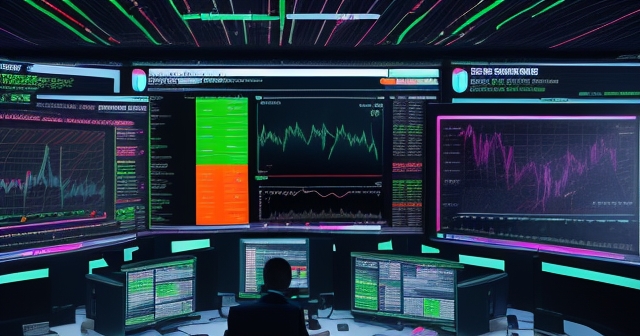
留言